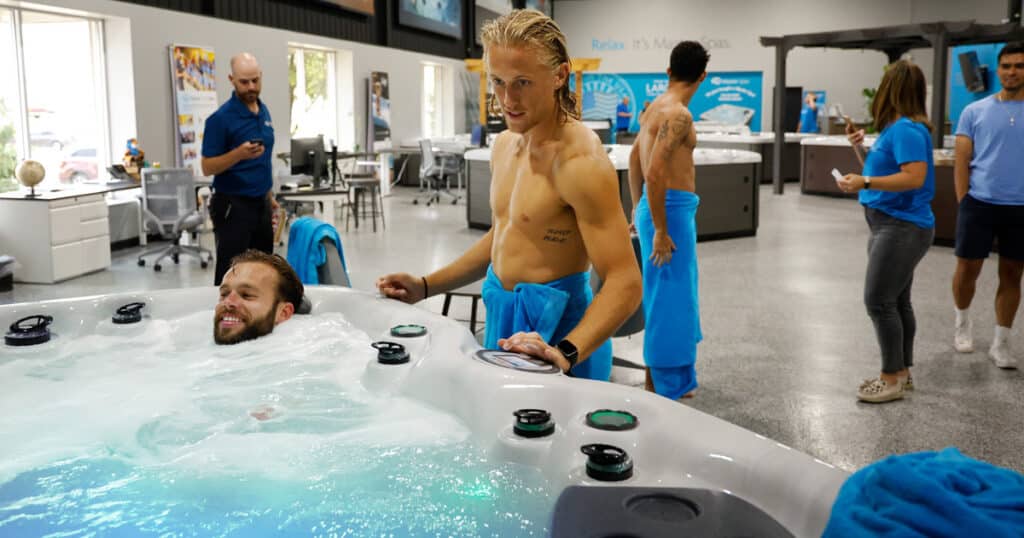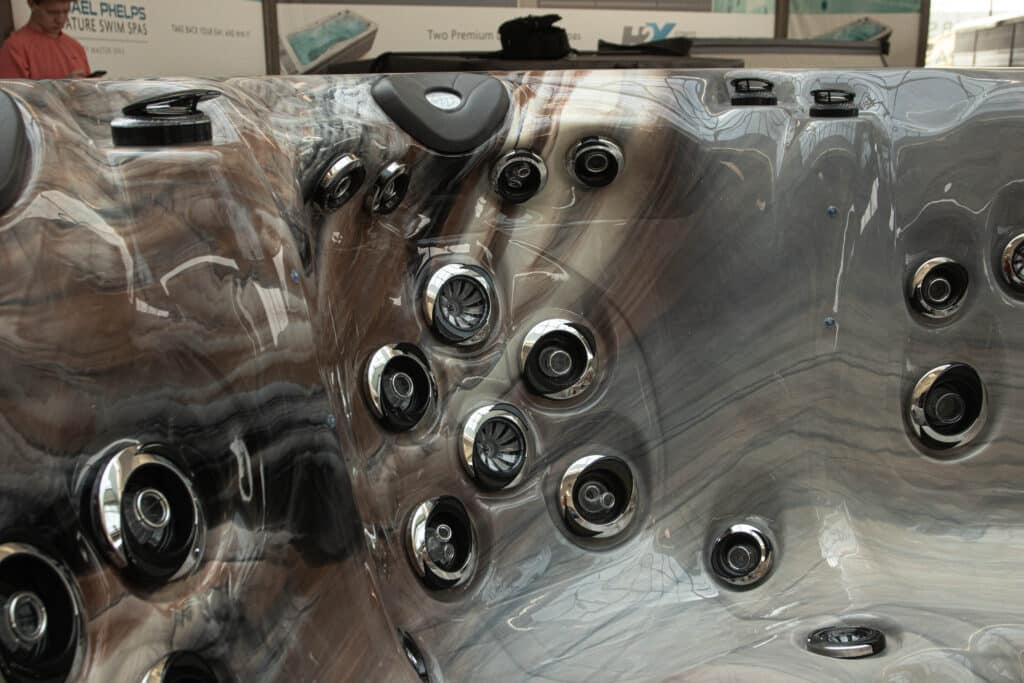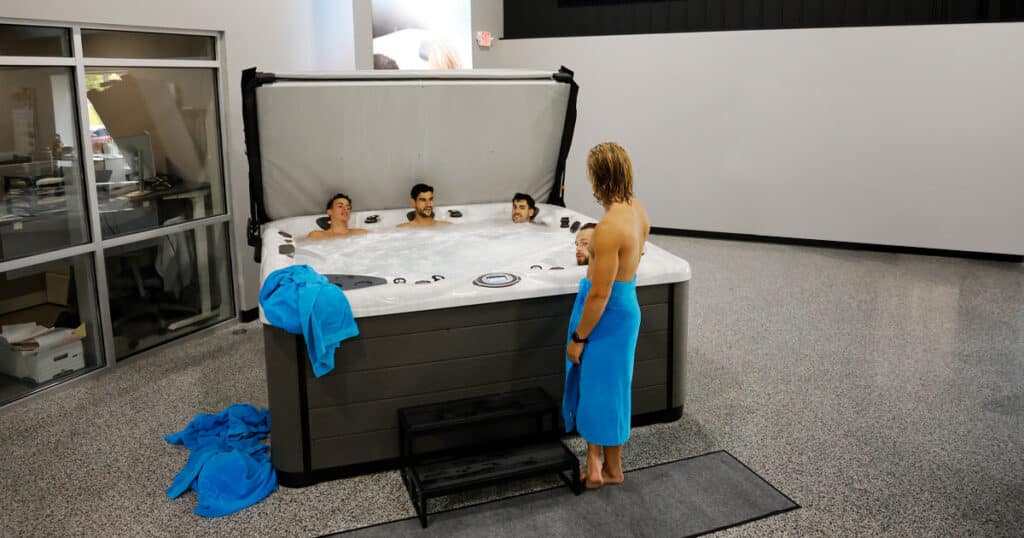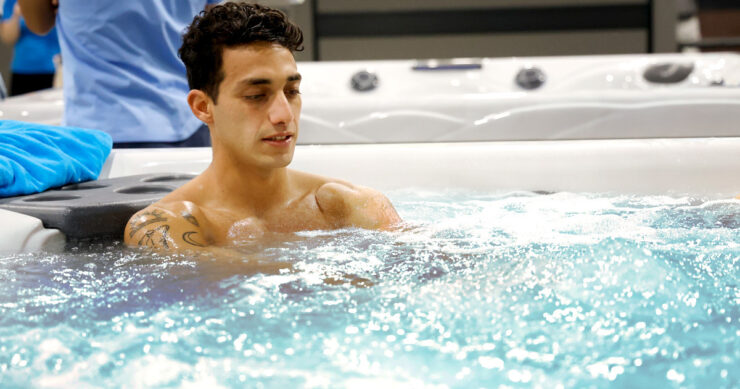The only thing that separates you from your morning coffee is a flight of stairs. But after the previous day’s workout, you know that descending those 12 or so steps will feel like the equivalent of scaling Mount Everest. Even if you try to take them sideways and even backward.
Muscle soreness is common after an intense workout or starting a new fitness program. The stress caused microscopic tears in your muscles. As a result, fluid rushed in to help heal the damage. And while that’s all good, it doesn’t feel so great — especially if you can smell a fresh pot of coffee or want to get in your next gym sesh.
But while you might want to work through it (and sometimes you can), excessive or prolonged muscle soreness can have a significant effect on your training. You might have to cut a workout short, ease up on the intensity, risky injury, or even take time off.
As an athlete, though, you are trying to do the opposite. You want to enhance performance, improve your endurance, get stronger, and prevent injuries.
The key is quality recovery.
Athletes have myriad recovery strategies available to them — compression, massage, stretching, and ice baths. But hot tub hydrotherapy can play a key role in your recovery routine. The combination of warm water and hydromassage can not only help you relax after a tough training session but ease muscle soreness.

Hot tub benefits for athletes
Soaking in a hot tub just feels good. It’s as if you can feel your body instantly relax as you settle into the hot water and turn on the jets. But that combination of water temperature and hydromassage can feel especially restorative after a workout or event, when your muscles feel tired, tight or just plain sore.
And it’s not just the physical relaxation of a hot tub that can benefit athletes and fitness enthusiasts. There are mental health advantages, as well.
Muscle relaxation and recovery
A good workout can get the heart pumping and the blood flowing. But circulation isn’t key to just a good session in the gym. Blood flow is also key to performance recovery, research shows, especially if you are doing high-intensity sessions.
And soaking in a hot tub as part of your recovery routine can promote better circulation.
The water temperature of a hot tub can be set up to 104 degrees. That temperature can help your vessels dilate, accelerating circulation and promoting faster recovery. The improved circulation aids in the transport of oxygen and nutrients to your muscles, while helping to remove metabolic from the tissues.
The overall benefit is less muscle soreness and discomfort, allowing you to get back to training sooner.
Pain relief
As an athlete, you are familiar with the dreaded DOMS — delayed onset muscle soreness. However, people who exercise can encounter more than general muscle aches. High-impact exercises, such as running and CrossFit, can cause joint discomfort. And then there’s the pain from overuse or injury.
But the worst might not be the pain — it’s that it keeps you from doing what you love.
The combination of heat, buoyancy, and massage jets in a hot tub can work wonders in alleviating pain. The heat stimulates the release of endorphins, the body’s natural painkillers, providing a natural and drug-free pain relief option. Moreover, the hydrostatic pressure of the water can reduce pressure on joints and provide a gentle massage-like effect that eases tension.

Stress reduction and mental well-being
A good mood can lead to a great workout, and a great workout can lead to an even better outlook. But what happens when you are feeling stressed, tired, or anxious? That gym session can feel like a struggle. Research shows that your mental well-being can directly impact your physical performance.
A soak in a hot tub can be an escape from the daily grind, allowing you to relax, unwind, and clear your mind. The warm water promotes the release of tension and stress, encouraging a calmer state of mind that contributes to better focus and overall mental balance.
Improved quality sleep
Quality sleep is crucial for recovery and optimal performance. Not only do you want to feel well-rested and have the energy for a workout but sleep allows your body to repair itself. According to several studies, athletes who got 10 hours of sleep a night improved their speed and reaction times, as well as felt better mentally throughout the day.
But how do you get better sleep? Soaking in a hot tub can help.
One of the benefits of hot tub hydrotherapy is improved sleep quality. The elevated body temperature during the soak causes a subsequent drop in temperature after leaving the hot tub, mimicking the body’s natural sleep cycle. This drop in temperature can signal the body that it’s time to sleep, making it easier for you to fall asleep and stay asleep throughout the night.
Enhanced flexibility
Flexibility and range of motion are essential for you to perform at your best, as well as reduce the risk of injury. Hot tub hydrotherapy can help increase flexibility by gently stretching muscles and connective tissues in the warm water. This can be particularly effective when combined with gentle stretching exercises performed in the hot tub. The warmth of the water also reduces muscle tension, making it easier to achieve a greater range of motion.

Tips for adding hot tub therapy to your recovery routine
Incorporating hot tub therapy into your athlete recovery routine can provide a multitude of benefits, from muscle relaxation and improved circulation to stress reduction and enhanced flexibility.
Aim for a 15- to 20-minute soak, gradually adjusting the time based on your comfort level. The water should be comfortably warm, not too hot, to prevent overheating. Master Spas hot tubs have a temperature range up to 104 degrees, which allows you to soak safely and enhance recovery.
Timing is key
Schedule your hot tub sessions strategically. Consider soaking in the hot tub after your workouts or competitions to maximize the benefits of muscle relaxation and recovery. Alternatively, you can use the hot tub on rest days to promote overall relaxation and mental rejuvenation.
While some gyms might have a community hot tub, investing in an outdoor hot tub can allow you to consistently incorporate hydrotherapy into your recovery routine. You can simply step into your hot tub at your own convenience, whether it’s after a rigorous workout or a challenging competition.
Utilize massage jets
Master Spas hot tubs feature premium massage jets that can provide targeted hydrotherapy to specific muscle groups. The out-of-water jets of the StressRelief Neck and Shoulder Seat can be used to relieve tension in your upper body. If the hot tub has a lounge, you can use the lower body jets to relieve pain in your hamstrings and calves.
In addition, you can adjust the flow of water and air through the jets to personalize the hydrotherapy experience to your recovery needs.
Combine with stretching
While in the hot tub, take advantage of the relaxed state of your muscles to perform gentle stretches. Focus on areas that feel particularly tight or sore. This can help improve flexibility and range of motion.
Mindful relaxation
Treat your hot tub session as a time for mindfulness and relaxation. Practice deep breathing, meditation, or visualization techniques to enhance the stress-relieving benefits of the warm water.
How to buy a hot tub
Look forward to spending more time in your own backyard oasis. A Master Spas hot tub can be enjoyed safely by the entire family. You can click here to learn more about the benefits of hydrotherapy. Or, contact your local Master Spas retailer to learn more about spa ownership. Wondering how much a Master Spas hot tub costs? You can request a quote here.


